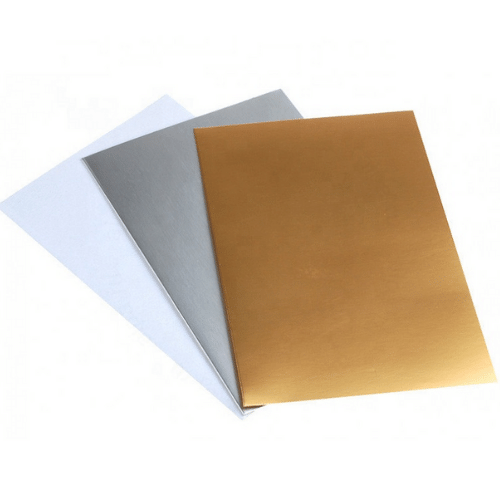4047 Aluminum Sheet
Developed as a brazing alloy, the 4047 aluminum alloy uses silicon as its main alloying element. AL 4047 or UNS A94047, which has 11–13% silicon, is typically utilized when high fluidity, low shrinkage, and hot cracking are required. This alloy is typically used in automotive applications, engine blocks, electronics, and as joining material. Some additional advantages include:
- Great corrosion-resistance
- Low melting point
- Excellent fluidity, preventing weld leakage
- Superb thermal and electrical conductivity
We offer all sizes, finishes, and tempers of the 4047 aluminum sheet and plate. Our expertise in the metallurgy field will surely cover all your AL 4047 needs. Exceeding the ANSI/AWS A5.10 (ER & R 4047) and AMS 4185 standards, we offer all the benefits of AL 4047 physical and mechanical properties.
4047 Aluminum Sheet Fabrication
We offer all sizes, finishes, and tempers of the 4047 aluminum sheet and plate. Our expertise in the metallurgy field will surely cover all your AL 4047 needs. Exceeding the ANSI/AWS A5.10 (ER & R 4047) and AMS 4185 standards, we offer all the benefits of AL 4047 physical and mechanical properties. We offer professional aluminum welding, bending, cutting, forming, and aluminum wire drawing.

Aluminum 4047 alloy is a filler, or brazing, the alloy that is non-heat treatable. Its high silicon content distinguishes it from other aluminum alloys.
The melting point of the 4047 aluminum sheet is about 580°C and 1075°F.
BAlSi-47 is the AWS designation of 4047 aluminum. The UNS number is A94047, and the European designation is EN AW-4047.
The yield strength for aluminum is about 28 KSI or 193 MPa.
A filler or brazing alloy is used during welding, brazing, soldering, hard facing, and other heat procedures to assemble metal components. Aluminum 4047 contributes to base metals’ longer-lasting, more solid cohesiveness.








